When you bowl league or recreation, likely the oil pattern that is applied to the lane surface is a house shot.
A house shot has a 10:1 oil volume ratio that includes a high volume of oil in the middle of the lane (2nd arrow to 2nd arrow) and a very low volume of oil on the outside parts of the lane near the gutter. The length of the pattern will be 39 - 41 feet.
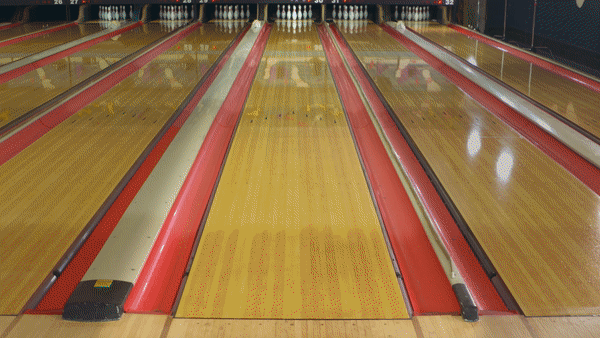
In this article, you’ll learn how to execute and bowl your best when playing on the house shot.
Inside and Outside
Some people call the outside part of the lane “free hook” when bowling on a house shot.
Free hook means that if you miss your target slightly to the right (right-handed bowlers), there’s a good chance the pattern will forgive you and hook back to the pocket.
This is because of the low volume of oil on the outside portion of the lane.
The inside portion of the lane has extra “hold” because of the high volume of oil located there.
This means you may get away with missing a board or two to the left (right-handed bowlers), and the ball will stay or hold on the intended path towards the pocket.
This is what makes the house shot, well, a house shot.
Each bowling center will have its own variation on the house shot, but for the most part, you know what you're getting, and the scores will be higher because of the forgiving conditions.
Stroker, Tweener, and Cranker
The breakpoint is where the ball begins to hook down the lane. The rule of 31 explains where the breakpoint is on any pattern.
A typical house shot’s breakpoint will be between 8 - 10 board, 39 - 41 feet down lane.
The three styles of bowler demonstrated getting to the same breakpoint, but their launch angles are all different. This is because each style has different characteristics determining how they get to the breakpoint.
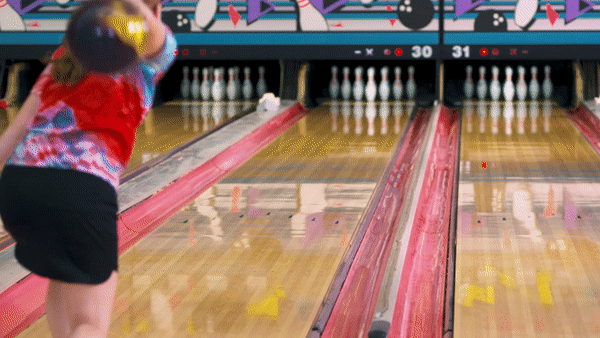
Practice time for bowling leagues and tournaments is when you learn how the oil pattern will affect the bowling ball’s motion.
The goal is to find the pocket and strike. You can’t waste frames in competition. If you're unable to get lined up in practice time, you’ll be starting from behind.
Getting Lined Up Stroker
More often than not, you’ll find straighter players throwing the bowling ball closer to the gutter, aka the outside part of the lane.
Struggling during practice time, Kaley Triske's bowling ball is hooking too much into the pocket (hitting high).

Kaley needs a different line to be able to match up with how the lane is playing.
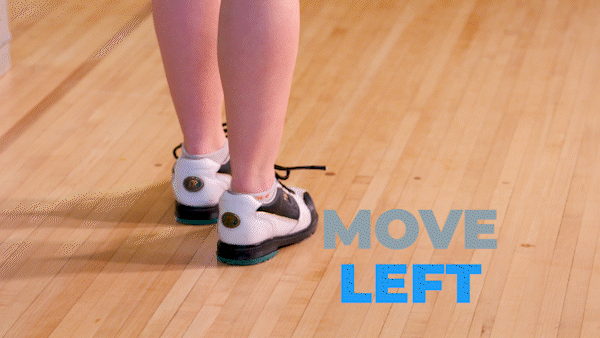
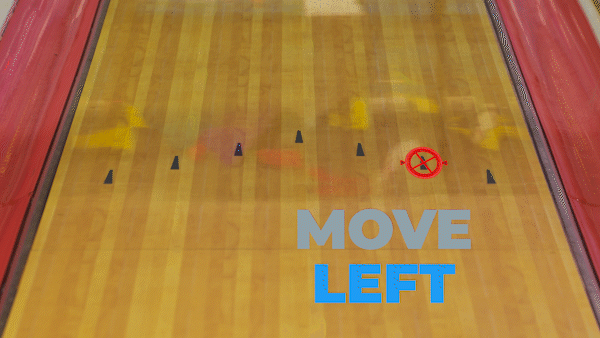
Moving her feet 2 (boards) left and her eyes 1 (board) left is a diagonal move that changes the shape of the shot while keeping the same breakpoint.
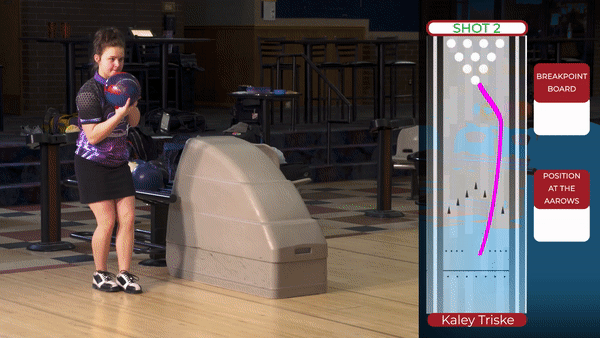
Changing her launch angle allows the bowling ball to enter all three phases of ball motion successfully, accompanied by a good entry angle into the pocket, resulting in a strike.
Getting Lined Up Tweener
Our tweener player for this example is Scott, and he is also struggling to find the pocket during practice time.
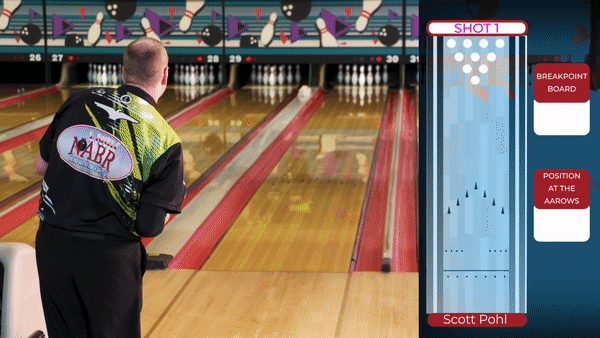
Scott missed the pocket to the right (light). The bowling ball doesn’t get into a good roll and deflects when it hits the headpin.
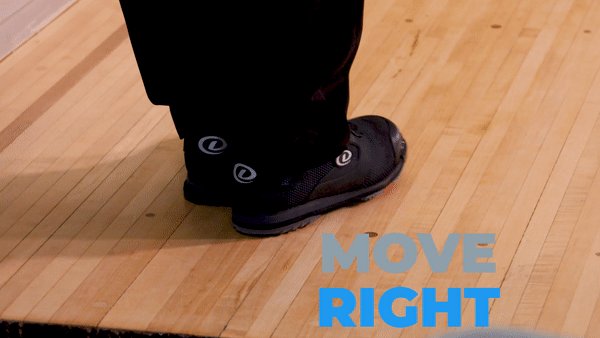
Scott will move to the right with his feet 2 boards and 2 boards right with his eyes on his target, making what is known as a parallel move.

A parallel move keeps the shape of the shot and moves where the bowling ball begins to hook down the lane (breakpoint).
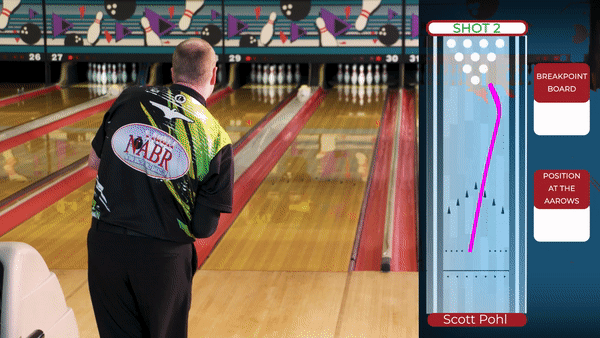
Getting Lined Up Cranker
Hailey Triske is our cranker, and her revs match her ball speed.
Hailey struggles to find her line during practice time, crossing over on her last shot.

Increasing the bowling ball speed will keep her in the same part of the lane and lessen the hook on the back end.
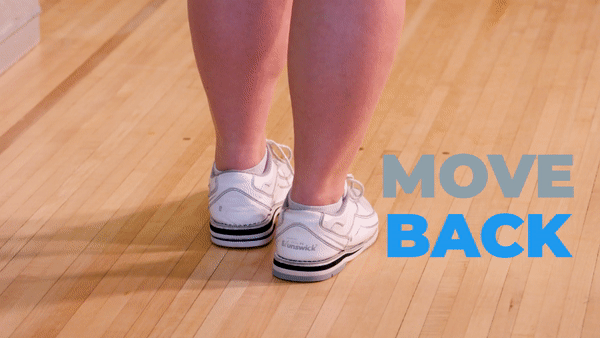
Moving back on the approach, Hailey gets her ball started quickly while her feet are moving faster, resulting in increased ball speed.
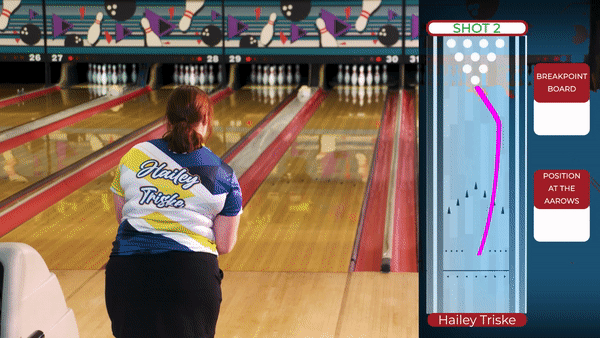
Lane Transition
When making any adjustment in bowling during competition, you should only make an adjustment if you know that you’ve fundamentally thrown a good shot.
The result may not be what you want, but you now know it’s the lane creating a problem, not you.
Hold yourself accountable and make moves from good fundamental shots that result in undesirable ball motion and pin count.
Bowling Ball Selection
Start with your benchmark ball. This is your go-to bowling ball that you depend on wherever you bowl.
If this bowling ball isn’t getting to the pocket consistently for you, one choice you have is to make a ball change, begging the question, “Which bowling ball should you switch to?”
To decide, you have to observe when and where on the lane your bowling ball is beginning to hook and how it is rolling through the pins.
If you need more right-to-left motion down the lane because your bowling ball is not hooking enough or hooking too early, you’ll switch to a weaker bowling ball.
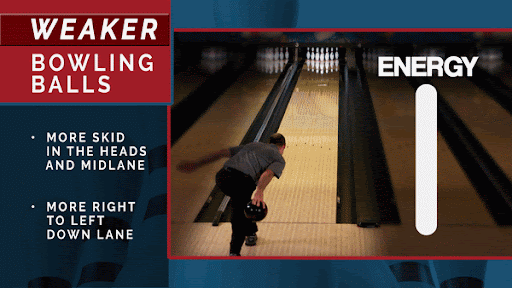
If you need your bowling ball to hook earlier down the lane, providing less right-to-left motion in the backend, you’ll switch to a stronger or more aggressive bowling ball.
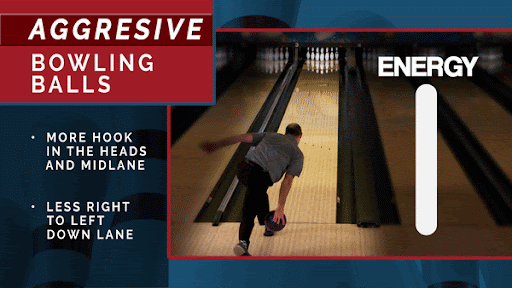
Lane Play Adjustments Without Switching Bowling Balls
If your bowling ball is hooking too much and going through the nose, move your feet and target left to get the bowling ball to roll in more oil before hitting the friction down lane.
The ball will travel farther down the lane before hooking and get you back into the pocket.

If your bowling ball is not hooking enough, meaning it’s not making the correct turn into the pocket and coming up light, move your feet and eyes right to get out of the higher volume of oil.

There’s a little something for every bowler in this article. The key to success on the house shot is to become as versatile of a bowler as possible so that you can stay ahead of the lanes when they transition.

How can i learn to read the shape of the shot so I can understand how to adjust.
Grat article. Confirms what I have been taught and try to do on house shots.
Interesting discussion of lane condition, starting position, ball speed, and ball composition. Well done. I try to record changes I observe so I can remember conditions and adjustments along with outcomes.
great info
Really interesting article and also helpful.
great tips. I'll be trying them. thanks.
Thank You so much on this tip. I been using this with my self and with the Special Olympic Bowlers in Brooklyn NY. they are using these tips that I send them. Thank You. Rodney Hankins
good tips. Thanks